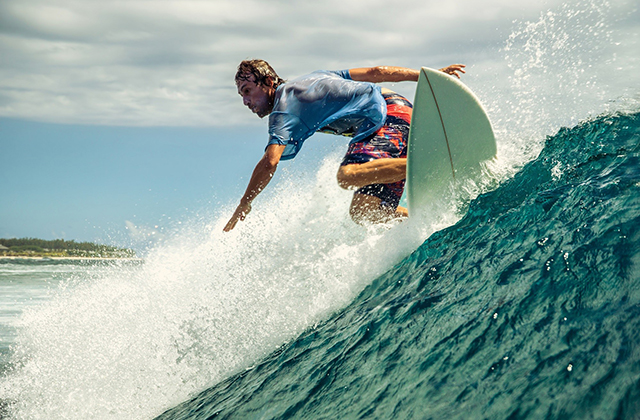How to Read a Surf Report
The workweek is over, Saturday is here…You woke up bright and early, packed a cooler full of sandwiches and drinks, piled your boards and friends into your van and cruised to your local beach. You step out of the car, squint your eyes as you look out at the ocean and…..wtf!? The water is flatter than a Nebraska turnpike. You drive to the next beach…same thing. Your day is ruined, but this disappointment can be avoided in the future by learning how to read surf reports. Surf contest is my type of event where in I enjoy a lot seeing surfers battling with waves.
Unlike normal weather reports or even ski/snowboard forecasts, surf reports are surprisingly technical, but they are extremely helpful and will be an asset in your search for waves, as long as you learn to read them correctly. Follow our guide, and hopefully the mystery of these reports will vanish and next time you head out to your spot you will be armed with the knowledge and equipment you need for the given day’s conditions.
The Basics
There are going to be 4 main factors that you are going to want to pay attention to when reading a surf report; swell direction, wave height, tides and wind (water temperature and air temperature are important, but don’t affect conditions as much).
Swell Direction
As the name suggests, swell direction simply tells you from which direction a swell is originating. A west swell is coming from the west, a southwest swell coming from the southwest. Depending on their orientation on the coast, different spots work better with different swell directions. Research some of your favorite local spots to see how swell direction impacts each one, and to learn where your best bet is for any given swell direction.
Wave Height (Swell height and period)
The first thing most surfers ask is before heading out is naturally, “How big are the waves going to be today?” The answer to this question actually depends on two factors, swell height and swell interval or period. For example, many surf reports will quote the wave height conditions like this: 5 ft at 10 seconds. The first number is the swell height and the second, the period. Both numbers are equally important in determining how big the conditions are going to be. The larger the swell interval/period, the larger the waves are going to be. 4 feet at 4 seconds, isn’t going to be much to write home about, but 4 feet at 22 seconds and you should get your ass out of bed and down to the beach as soon as you can!
Between surfers, wave height is also discussed and measured in reference to the human body. 1-3 foot waves are referred to as waist high, 3-5 as chest high, 6-8 foot as overhead, 10 and higher as double over head etc.
Wind
While swell direction will determine the existence of waves at your local spot, swell height andperiod determine the size, wind is the primary factor in determining the quality of the waves. Learning the basics of how wind affects surf is essential in predicting conditions. Scientifically, the wind gives birth to waves by transferring energy from the air to the water. In a more specific surfing sense, winds can make or break the conditions at your local spot. A swell can be hitting perfectly, churning out huge waves, only to have a nasty on-shore wind and ruin the party. There are two basic rules you need to know:What is an off-shore wind? What is an on-shore wind?
Offshore winds (or no winds) are generally good. The easiest ways to imagine this isto picture yourself facing the water. An off shore wind would be hitting you in the back or blowing “off the shore.”
On-shore winds are generally bad as they can take a sweet swell and turn it into choppy, messy waves. These are the opposite of off-shore winds. If you picture yourself facing the water again, the wind would be blasting you in the face or blowing “onto the shore.” So to review, Off-shore winds…good. No wind….good. On-shore winds….bad. Most buoys will measure wind based on a compass reading and speed (Knots). So if your spot faces northwest and the report shows a wind blowing SSE (south/southeast) at 10 knots, you would conclude that there is a light off-shore wind. Good news!
Tides
The final factor we will discuss in this post differs at every break. Tides change the depth of the water, which either hides or exposes the rocks, beach or points, on which waves break. Some spots work best at high tide, some at mid tide and some at low tide. This does not mean it isn’t possible to surf during off times of the day (in fact you may enjoy the fact that the water is less crowded), it just refers to the ideal time of day, when waves are most likely to be going off.
Now you have the tools to read surf reports and make knowledgeable predictions of the conditions at your local spots. Many sites also have beach cameras that show a live feed of wave conditions. These can give you an idea of what the waves are looking like in real-time.
The guys and gals at CRSI provide real time Tamarindo surf reports and weather on their website courtesy of Surfline. Magic seaweed also provides reports for surf spots around the world.
By, William Hoyt
Article Source: http://EzineArticles.com/expert/William_Hoyt/907133
Article Source: http://EzineArticles.com/5756184


